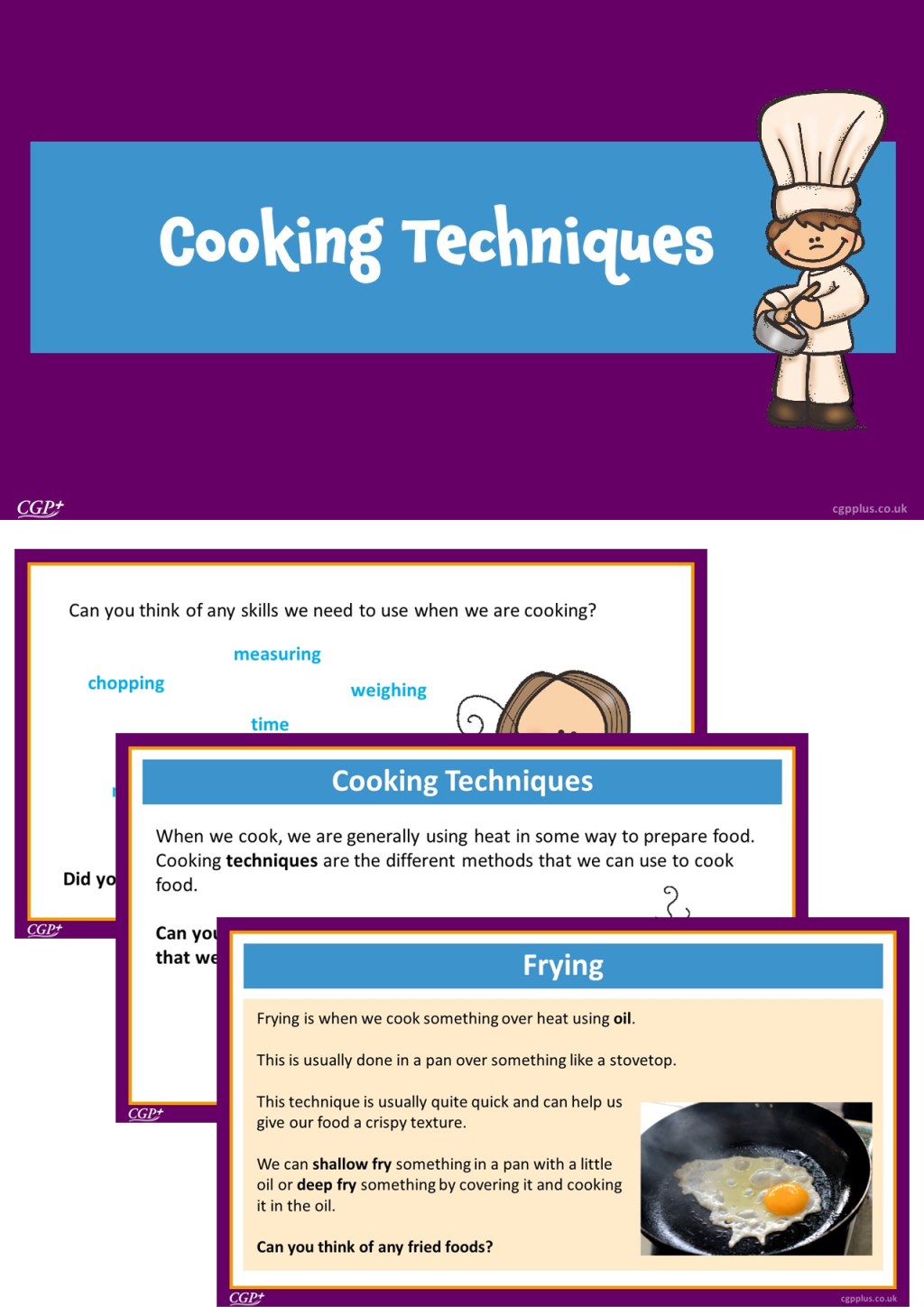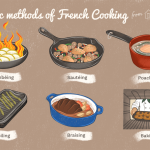Master The Art Of Cooking Techniques KS2: Unleash Your Inner Chef Today!
Cooking Techniques KS2: A Guide to Mastering the Art of Cooking
Welcome, Readers! In this article, we will explore the essential cooking techniques KS2 and how they can elevate your culinary skills. Whether you are a beginner or an experienced cook, understanding these techniques will help you create delicious and impressive dishes. Let’s dive in!
Introduction
What are cooking techniques KS2? Cooking techniques KS2 refer to a set of fundamental methods used in the kitchen to prepare and cook food. These techniques are specifically designed for KS2 students, aged 7-11, to develop their cooking skills and encourage creativity in the kitchen.
1 Picture Gallery: Master The Art Of Cooking Techniques KS2: Unleash Your Inner Chef Today!

Who can benefit from learning cooking techniques KS2? Anyone, including children, parents, and educators, can benefit from learning cooking techniques KS2. It serves as an excellent foundation for young aspiring chefs and provides an opportunity for families to bond over cooking.
When should you introduce cooking techniques KS2? It’s never too early to introduce cooking techniques KS2. Starting at a young age allows children to develop essential skills, such as knife handling, measuring ingredients, and following recipes. However, these techniques can also be learned and enjoyed by individuals of any age.
Where can cooking techniques KS2 be applied? Cooking techniques KS2 can be applied in various settings, including home kitchens, school cooking lessons, culinary workshops, and even in professional kitchens. The skills acquired through these techniques can be utilized throughout a lifetime.

Image Source: cgpplus.co.uk
Why are cooking techniques KS2 important? Learning cooking techniques KS2 not only enhances culinary skills but also promotes healthy eating habits, creativity, and independence in the kitchen. These techniques empower individuals to experiment with flavors and explore new recipes confidently.
How can you master cooking techniques KS2? Mastering cooking techniques KS2 requires practice, patience, and a love for cooking. It is essential to start with the basics and gradually progress to more advanced techniques. Taking cooking classes, watching instructional videos, and experimenting with different recipes can also aid in mastering these skills.
The Complete Guide to Cooking Techniques KS2
1. Chopping and Dicing
Chopping and dicing are fundamental techniques that involve cutting ingredients into small, uniform pieces. This technique is crucial for ensuring even cooking and enhancing the presentation of dishes.
2. Slicing and Julienne
Slicing and julienne techniques involve cutting ingredients into thin, uniform slices or matchstick-like strips. These techniques are commonly used for garnishes, salads, stir-fries, and more.
3. Mincing and Grinding
Mincing and grinding techniques involve finely chopping or grinding ingredients into a paste-like consistency. These techniques are often used to enhance flavors and incorporate aromatics into dishes.
4. Simmering and Boiling
Simmering and boiling techniques involve cooking ingredients in liquid at a controlled temperature. These techniques are commonly used for preparing soups, stews, sauces, and pasta.
5. Baking and Roasting
Baking and roasting techniques involve cooking food in dry, hot air. These techniques are commonly used for baking bread, cakes, cookies, and roasting meats and vegetables.
6. Grilling and Barbecuing
Grilling and barbecuing techniques involve cooking food over direct heat. These techniques are commonly used for grilling meats, fish, vegetables, and creating delicious smoky flavors.
7. Steaming and Poaching
Steaming and poaching techniques involve cooking food using steam or gentle heat. These techniques are commonly used for preserving nutrients and retaining the natural flavors of ingredients.
Advantages and Disadvantages of Cooking Techniques KS2
Advantages
1. Encourages creativity and experimentation in the kitchen.
2. Promotes healthy eating habits and awareness of ingredients.
3. Provides a foundation for a lifetime of culinary skills.
4. Develops essential life skills, such as teamwork and problem-solving.
5. Fosters a sense of accomplishment and confidence in the kitchen.
Disadvantages
1. Requires adult supervision for young children.
2. May involve the use of sharp tools and heat sources, requiring caution.
3. Certain techniques may require specialized equipment or ingredients.
4. Can be time-consuming, especially for complex recipes.
5. Initial learning curve may be challenging for beginners.
Frequently Asked Questions (FAQs)
1. Can children learn cooking techniques KS2?
Yes, cooking techniques KS2 are specifically designed for children aged 7-11. It’s a great way to introduce them to the joys of cooking and develop their skills.
2. Are cooking techniques KS2 only for beginners?
No, cooking techniques KS2 can be enjoyed by individuals of all skill levels. It serves as a foundation for beginners and a refresher for experienced cooks.
3. How can I make learning cooking techniques KS2 fun for my child?
You can make learning cooking techniques KS2 fun by involving your child in meal planning, grocery shopping, and letting them choose recipes they are excited about. Encourage creativity and experimentation in the kitchen.
4. Can I apply cooking techniques KS2 to everyday cooking?
Absolutely! Cooking techniques KS2 provide a solid foundation for everyday cooking. You can incorporate these techniques into your daily meals to elevate the flavors and presentation of your dishes.
5. Are there any safety precautions to keep in mind while practicing cooking techniques KS2?
Yes, it is important to prioritize safety while practicing cooking techniques KS2. Always supervise children, use appropriate tools, handle sharp objects with care, and follow safety guidelines provided with kitchen appliances.
Conclusion
In conclusion, learning cooking techniques KS2 is a valuable skill that offers numerous benefits. It not only enhances culinary abilities but also promotes creativity, independence, and healthy eating habits. Start by mastering the basics and gradually explore more advanced techniques. Remember, practice makes perfect!
Now, it’s time to put your newfound knowledge into action. Grab your apron, gather your ingredients, and embark on your culinary journey. Happy cooking, friends!
Final Remarks
This article aims to provide a comprehensive guide to cooking techniques KS2. It is important to note that while we strive to provide accurate and up-to-date information, cooking techniques are subject to personal interpretation and variations. Always follow proper food safety guidelines and consult reliable sources for specific recipes and techniques.
This post topic: Cooking Techniques

